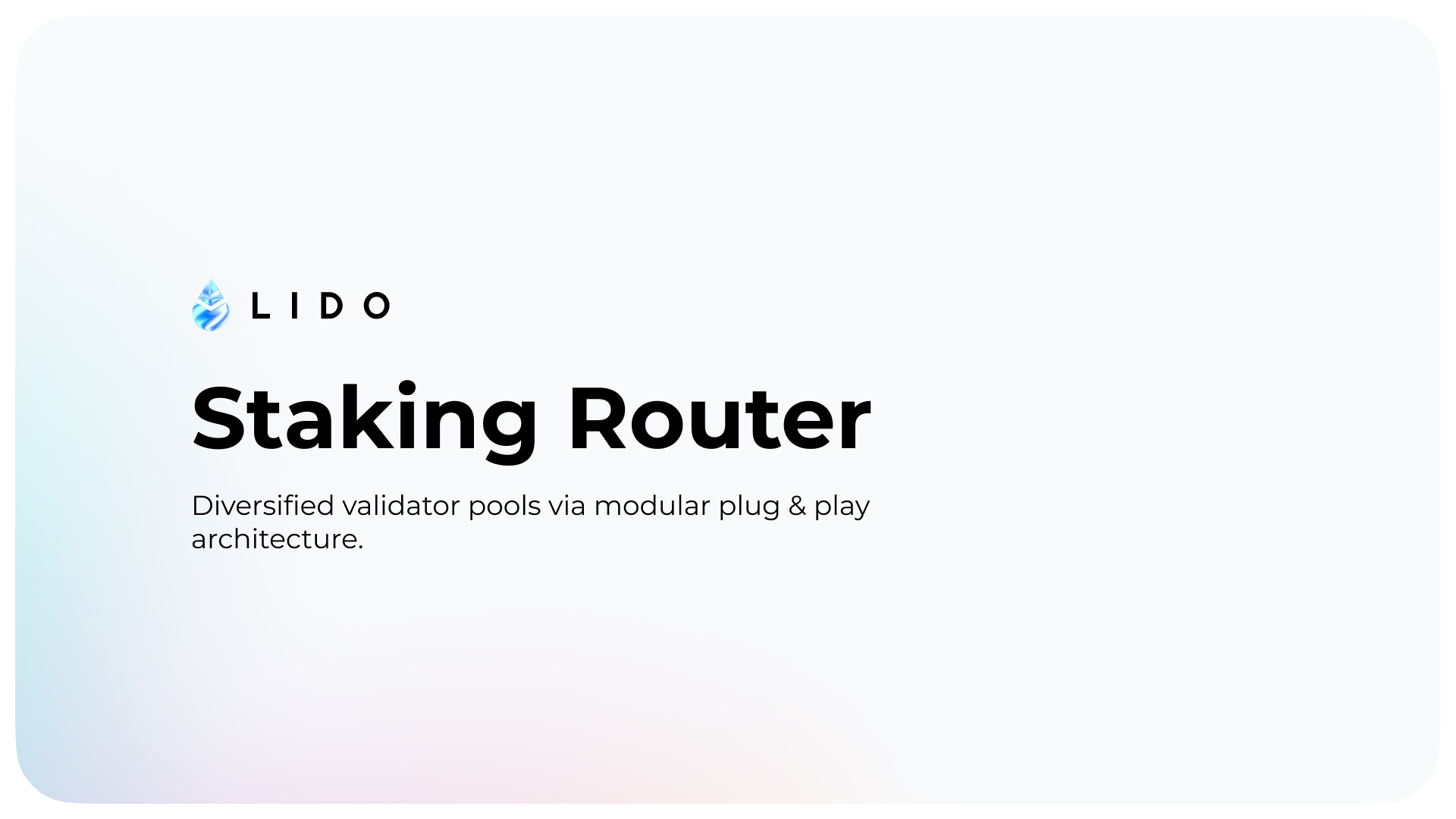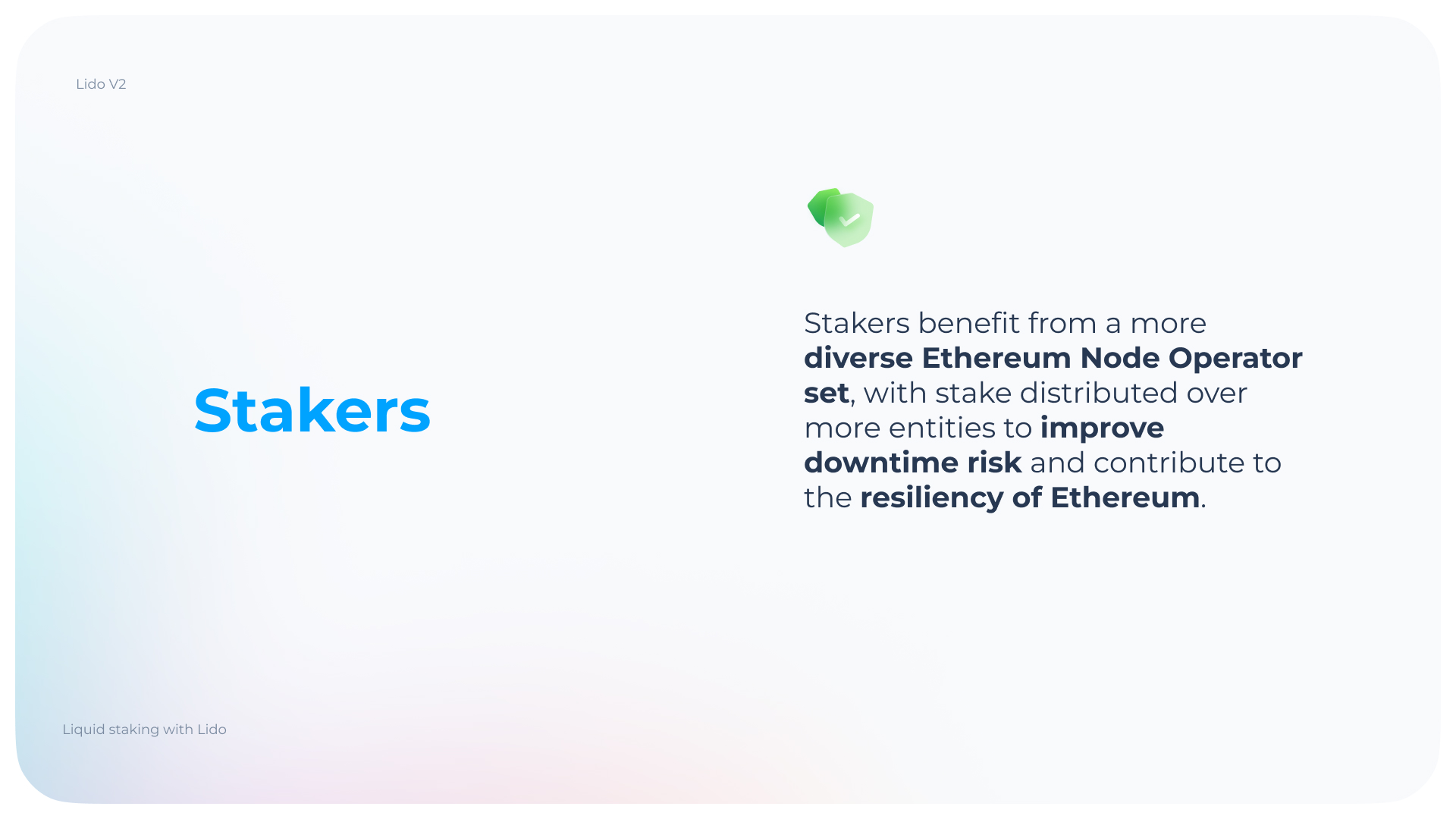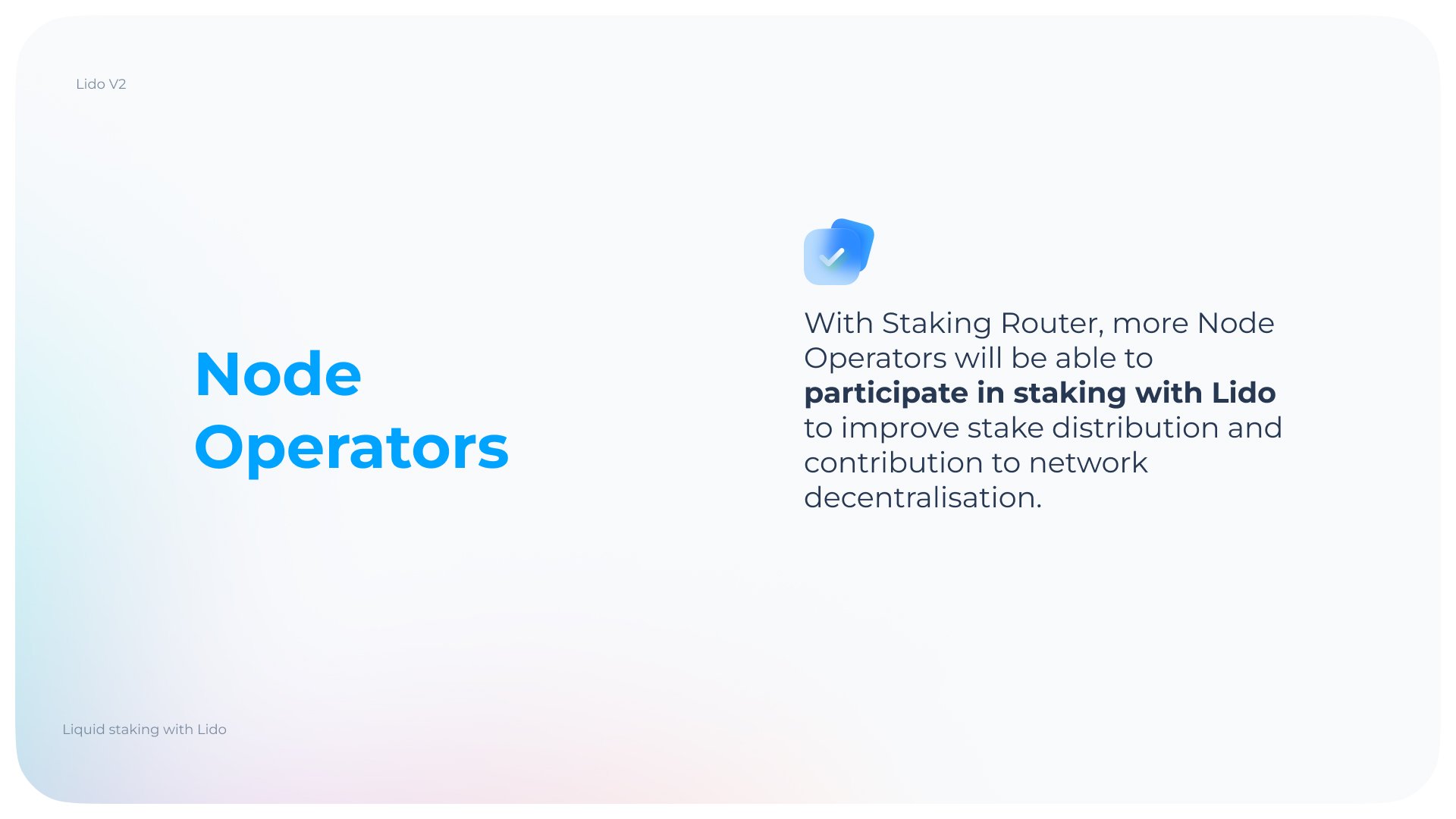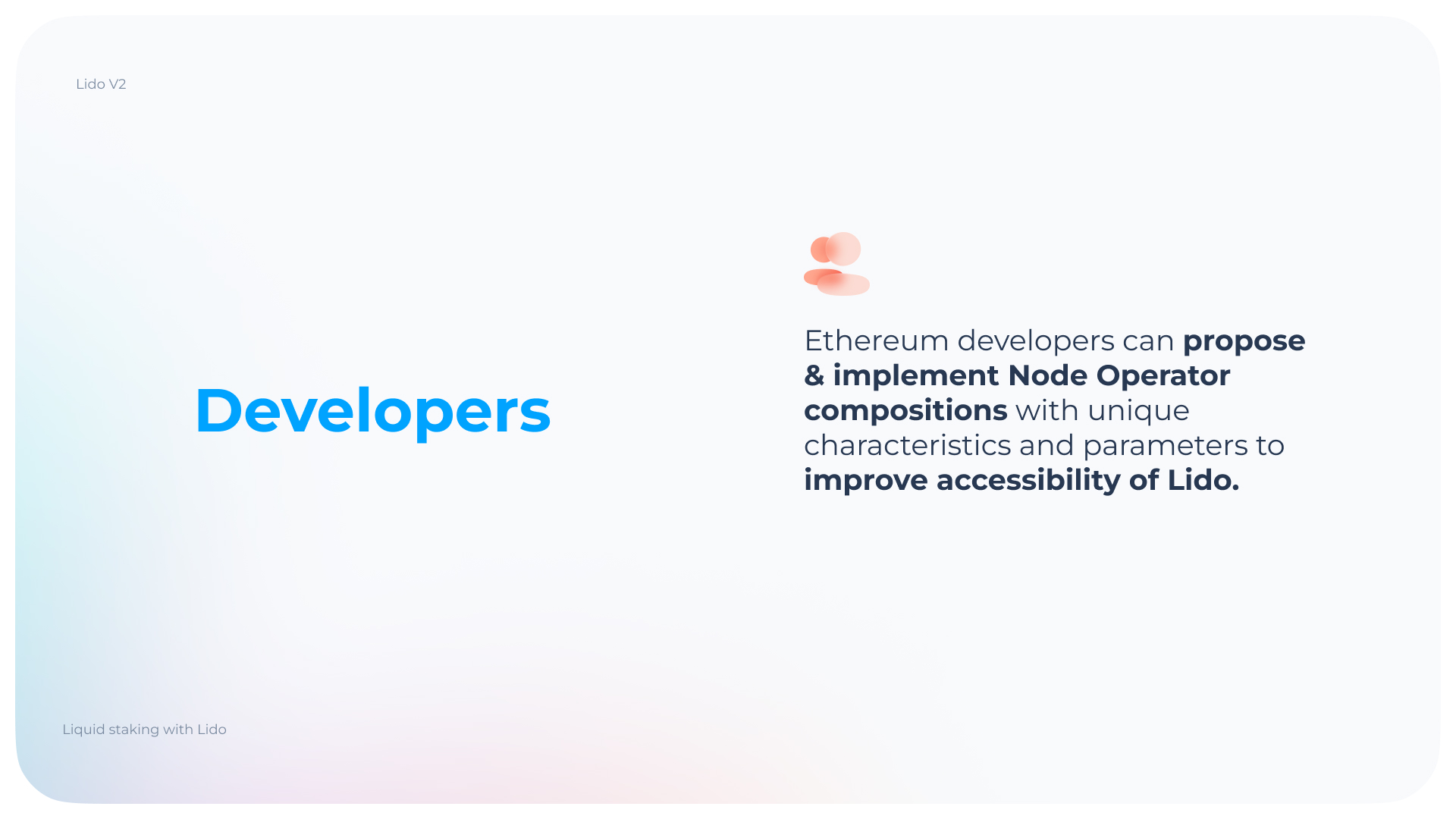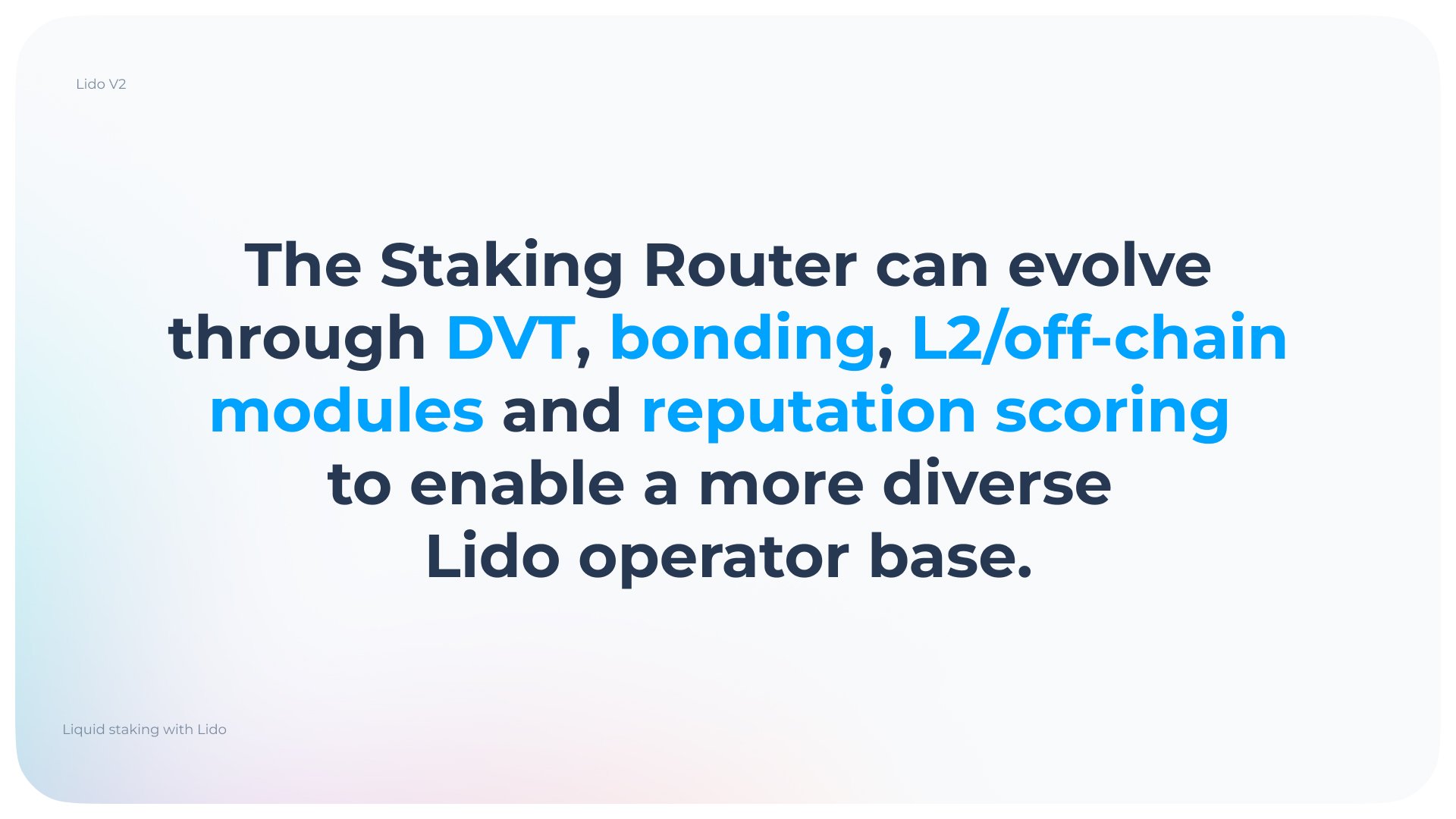Thread
Staking Router: Explained 🖥️
As part of Lido V2, we introduced the Staking Router: a modular architecture capable of allowing anyone (from solo stakers to DAOs) to create a Lido staking module.
What does this actually mean? 👇
As part of Lido V2, we introduced the Staking Router: a modular architecture capable of allowing anyone (from solo stakers to DAOs) to create a Lido staking module.
What does this actually mean? 👇
What is it?
The Staking Router is an upgrade which transforms the Lido staking operator registry into a modular + composable plug & play architecture.
It turns Lido into a collaborative platform for home and community stakers, developers, and node operators.
The Staking Router is an upgrade which transforms the Lido staking operator registry into a modular + composable plug & play architecture.
It turns Lido into a collaborative platform for home and community stakers, developers, and node operators.
Put another way, the Staking Router allows Lido to move towards a more modular architecture with a more bottom-up philosophy.
Anyone can propose a module, and each validator pool is treated as its own independent module.
Anyone can propose a module, and each validator pool is treated as its own independent module.
While the Staking Router is responsible for allocating resources across all modules, each module manages its own internal operator registry, store keys, and stake + reward allocation between participants.
A module can include a variety of different types of node operators - from solo stakers to DAOs and staking organisations.
The main idea is to allow for improved collaboration and bottom-up experimentation with a multitude of NO configurations.
The main idea is to allow for improved collaboration and bottom-up experimentation with a multitude of NO configurations.
What’s in it for stakers?
Lido stakers stand to benefit from a more diverse Ethereum NO set, which in turn reduces downtime risk and increases the overall resilience of the Ethereum network.
Lido stakers stand to benefit from a more diverse Ethereum NO set, which in turn reduces downtime risk and increases the overall resilience of the Ethereum network.
What’s in it for node operators?
The modular architecture unlocked by the Staking Router, allows for a more diverse set of NOs to participate in the protocol in a bottom-up way.
In particular, it paves the way to a fully permissionless node operator set.
The modular architecture unlocked by the Staking Router, allows for a more diverse set of NOs to participate in the protocol in a bottom-up way.
In particular, it paves the way to a fully permissionless node operator set.
What’s in it for developers?
The Staking Router opens the door for external developers to contribute to the protocol.
Devs can propose + implement NO compositions with their own preferred set of characteristics and parameters (whether its fees, security or collateral options).
The Staking Router opens the door for external developers to contribute to the protocol.
Devs can propose + implement NO compositions with their own preferred set of characteristics and parameters (whether its fees, security or collateral options).
Where are we now?
While the Staking Router has landed, we expect it will take a few months for the first staking modules to be activated.
Mechanisms such as DVT, self-bonding, L2/off-chain modules, and reputation scoring will be key to unlocking its full potential.
While the Staking Router has landed, we expect it will take a few months for the first staking modules to be activated.
Mechanisms such as DVT, self-bonding, L2/off-chain modules, and reputation scoring will be key to unlocking its full potential.
For a more technical breakdown of the proposed Staking Router design, check out hackmd.io/f1wvHzpjTIq41-GCrdaMjw.
Mentions
See All
Hasu @hasufl
·
Feb 10, 2023
Must read 👇
